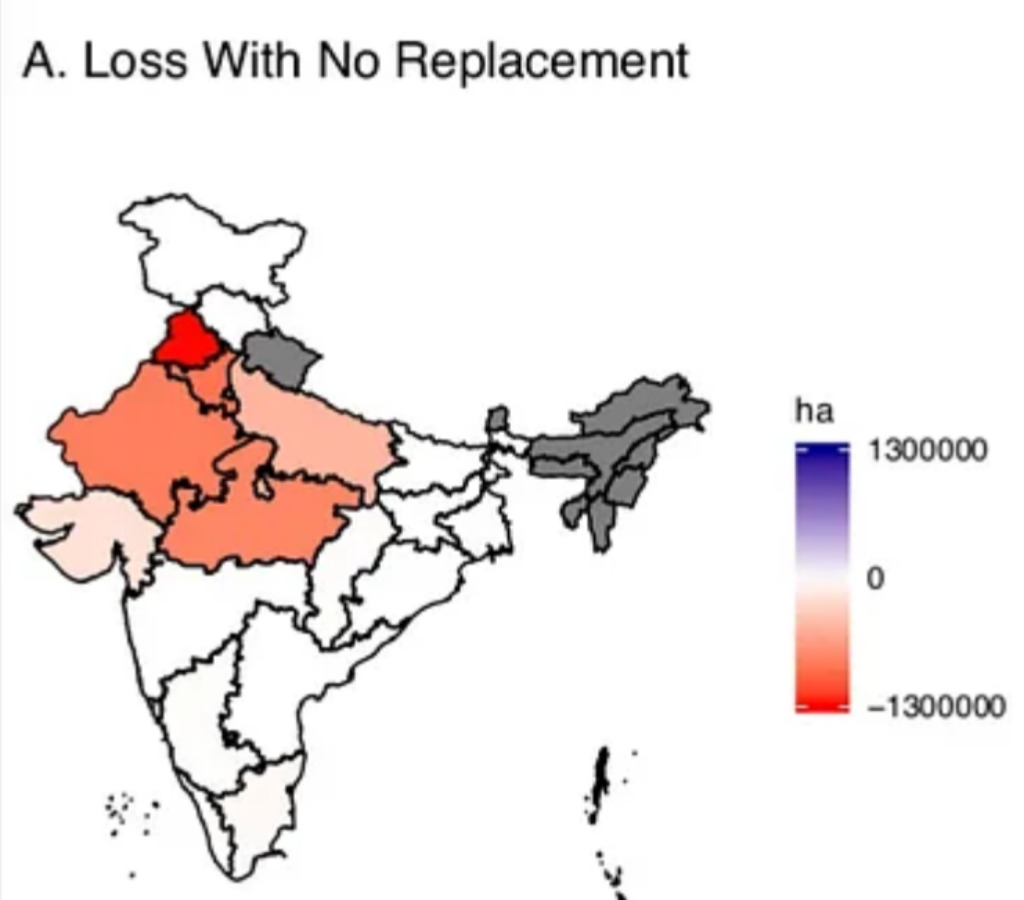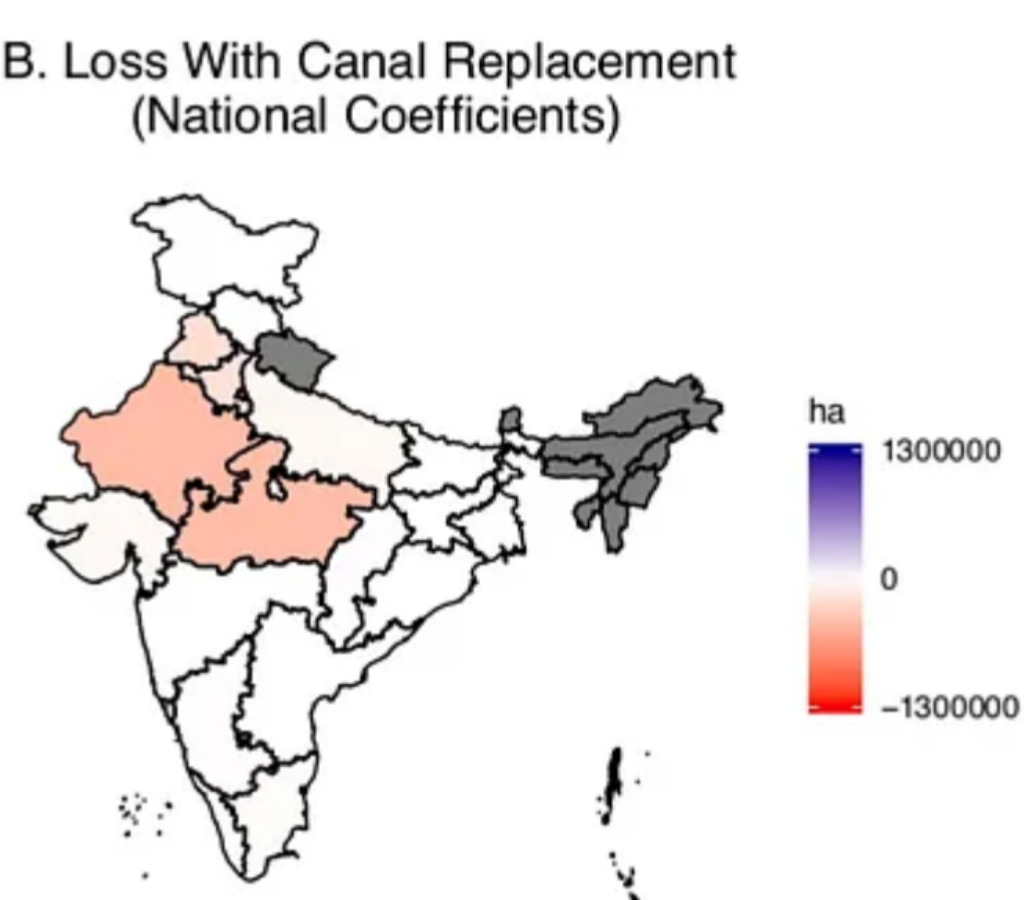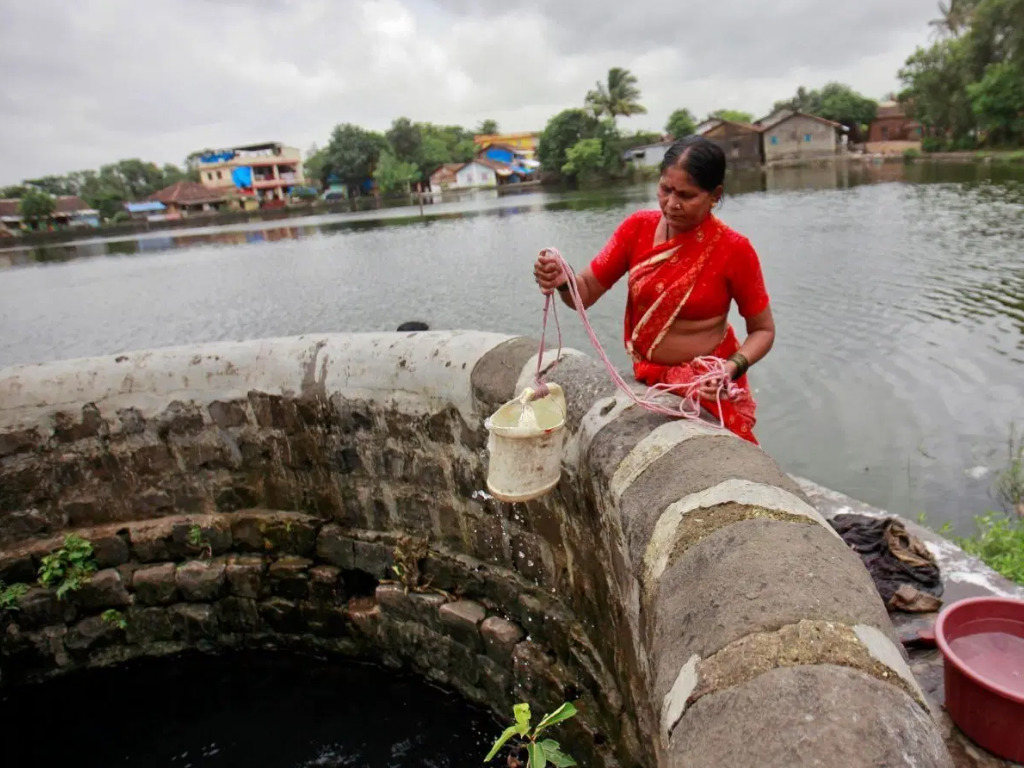India’s Groundwater Is In Trouble. And It Could Cause a Food Shortage for Millions By 2025, Study Finds
4 Mins Read
A recent study of the groundwater in India revealed that by 2025, large areas of the north-western and southern parts of the country will have “critically low groundwater availability”, leading to a decrease in cropping, that will ultimately cause an imbalance in the food security for millions.
Published in the journal Science Advances, the study found that huge swaths of the second-most populous country on the planet will run out of groundwater sooner than expected. Winter crop harvests are at risk of decreasing by 20% overall, and 68% in the over-exploited regions, leading to a nationwide food security crisis.
The research was funded in part by a NASA New Investigator Award and two NASA Land Cover and Land Use Change grants. It’s the first research of its kind to use census data about the irrigation methods of more than 500,000 Indian villages to predict losses based on groundwater depletion predictions.
Groundwater in trouble
The study authors warn that even alternative irrigation methods like canals, would not be ideal as harvests will continue to decline by 7% across India and 24% in worst-hit regions.
The water shortage is not due to a lack of water, but instead, it is the amount of water wasted, in particular in the agricultural sector which uses up 80% of the country’s water every year. Areas where farmers cultivate water-intensive crops, such as wheat and rice, are already running out of groundwater.

In an interview with CIMMYT, the study’s lead author and an assistant professor at the University of Michigan’s School for Environment and Sustainability, Meha Jain, said: “Our results highlight the critical importance of groundwater for Indian agriculture and rural livelihoods, and we were able to show that simply providing canal irrigation as a substitute irrigation source will likely not be enough to maintain current production levels in the face of groundwater depletion. These findings suggest that other adaptation strategies, in addition to canal expansion, are needed to cope with ongoing groundwater losses.”
By analyzing satellite imagery and village-level census data, the study focused on winter-cropped areas and showed that, although farmers plant crops during rains, the crops grown in winter heavily rely on groundwater, accounting for about 44% of the country’s annual cropped area for food grains.
Our results highlight the critical importance of groundwater for Indian agriculture and rural livelihoods, and we were able to show that simply providing canal irrigation as a substitute irrigation source will likely not be enough to maintain current production levels in the face of groundwater depletion
Meha Jain, study’s lead author
Balwinder Singh of the International Maize and Wheat Improvement Center said that to prevent the groundwater resources from depleting, coordinated efforts are needed. “This should be supported by science-led policy decisions on what strategies and technology solutions to scale out to improve irrigation efficiency.”

Some of the ways that could be done are by moving away from growing rice in winter and switching to less water-intensive crops. The researchers also noted widespread adoption of sprinklers and drip irrigation as well as policies that concentrate on heightening the efficiency of irrigation canals could help protect groundwater.
Galford said: “Understanding the complex relationship between food security and water availability is crucial as we prepare for future rainfall variability due to global climate change.”
We need coordinated efforts to solve this water availability and food security issue, which should be supported by science-led policy decisions on what strategies and technology solutions to scale out to improve irrigation efficiency.
co-author Balwinder Singh
Through the country’s Minimum Support Prices (MSPs), farmers are encouraged to grow more than required, and back in June 2020, there were 83.2 million tons of wheat and rice stocks with the government. This is much as four times the amount needed to feed those who fall under the poverty line. But the excess often ends up in ethanol production or is left to rot.
Jairaj Devadiga, an economist specializing in public policy and economic history, suggested a few measures that could help divert the crisis. One is to make farmers pay for the electricity that is utilized to pump out groundwater, making them more conscious about how much water they need; and secondly, giving private ownership to groundwater pushing for a switch in growing less water-intensive crops.
Lead image courtesy of Reuters/Danish Siddiqui.




